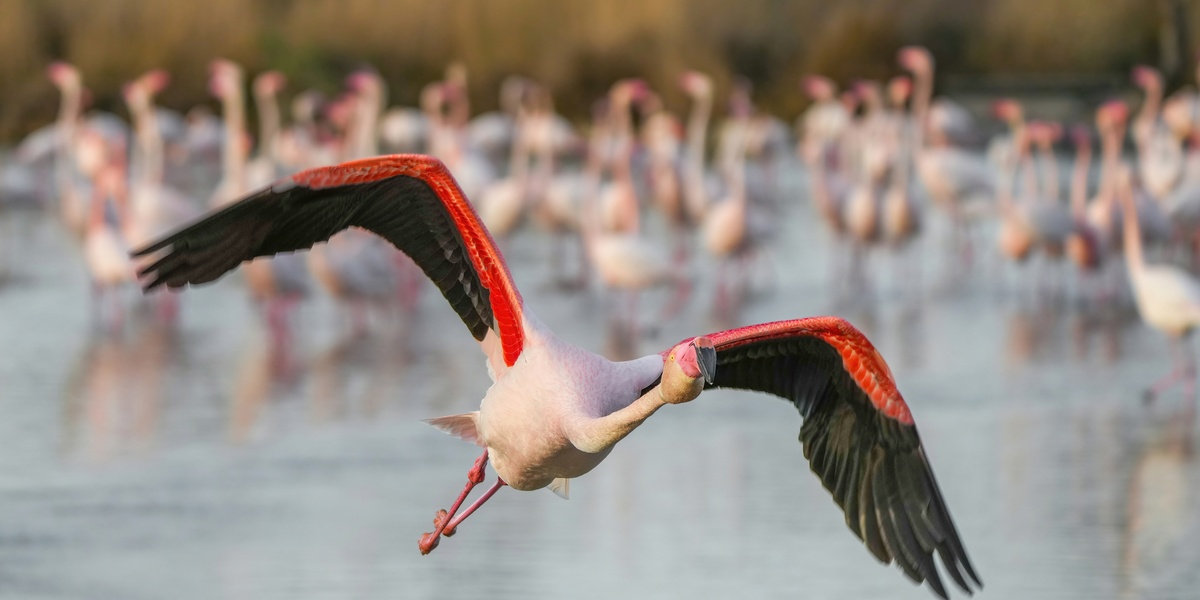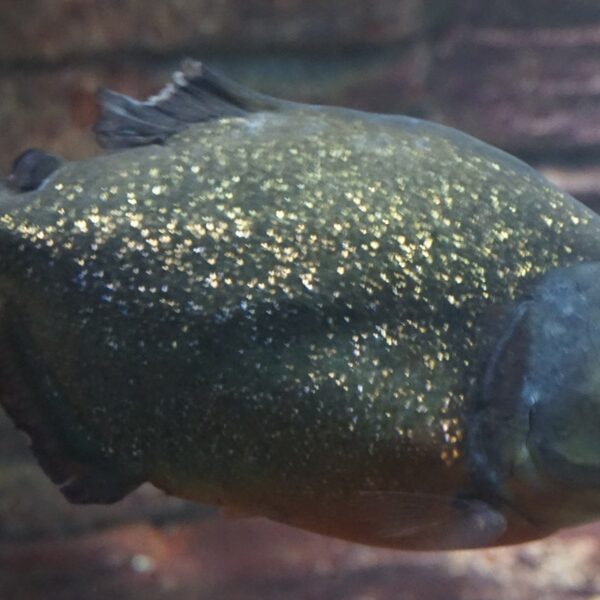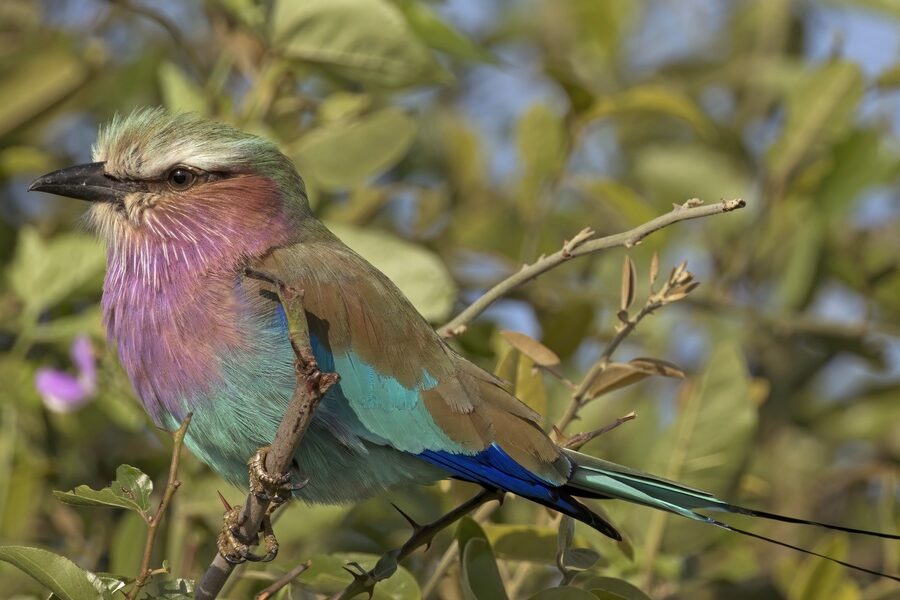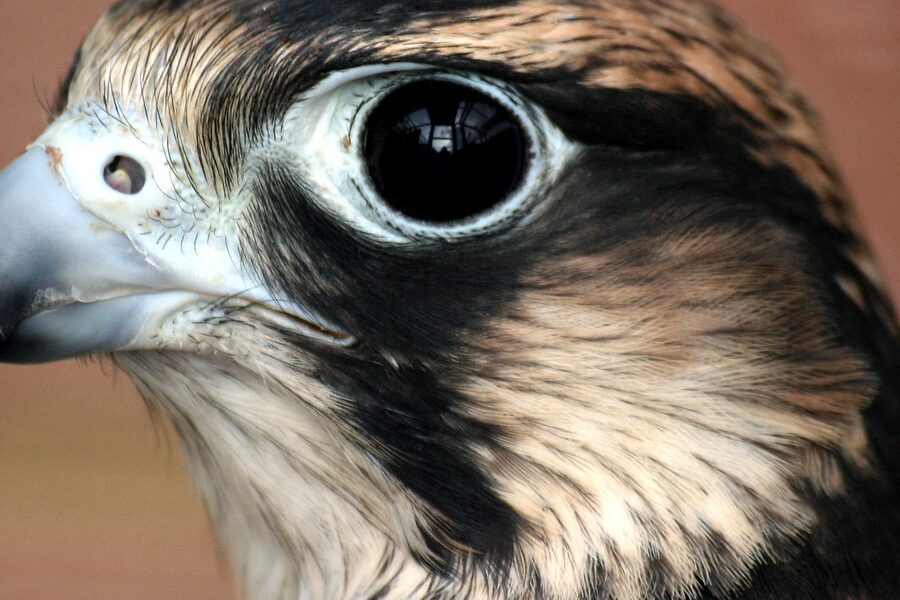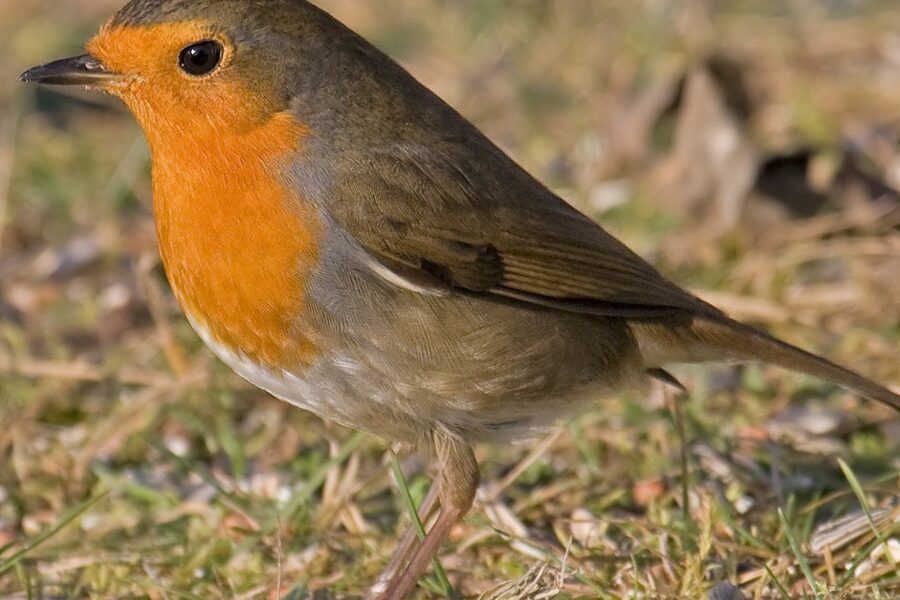From coastal salt flats to mountain crags, pink plumage turns up in surprising places around the world. Whether you’re birding near a tropical lagoon or scanning rocky cliffs, noticing a flash of pink is as much about habitat and behavior as it is about color.
There are 27 pink birds, ranging from American Flamingo to Wallcreeper; for each species the table lists Scientific name,Length (cm),Range — you’ll find below.
How can I tell similar pink species apart in the field?
Look beyond color: size, bill shape, leg length, and behavior are the quickest clues (flamingos feed with a distinctive head-down filter, while a Wallcreeper hops along rock faces). Note habitat and range from the table entries, and compare juvenile vs. adult plumage since youngsters can be paler.
Is the pink color always diet-related?
Diet-driven carotenoids cause pink in many species (flamingos get theirs from algae and crustaceans), but genetics and feather structure also influence hue. Some species retain pink through inherited pigmentation rather than recent feeding, so check the Scientific name and Range in the list to understand each species’ cause.
Pink Birds
| Name | Scientific name | Length (cm) | Range |
|---|---|---|---|
| American Flamingo | Phoenicopterus ruber | 120-145 | Caribbean, coastal northern South America, with a small population in Florida. |
| Greater Flamingo | Phoenicopterus roseus | 110-150 | Africa, Southern Europe, and South and Southwest Asia. |
| Lesser Flamingo | Phoeniconaias minor | 80-90 | Sub-Saharan Africa and parts of India. |
| Chilean Flamingo | Phoenicopterus chilensis | 110-130 | Temperate South America, from the Andes to coastal lowlands. |
| Andean Flamingo | Phoenicoparrus andinus | 100-110 | High Andes mountains in Peru, Bolivia, Chile, and Argentina. |
| James’s Flamingo | Phoenicoparrus jamesi | 90-92 | High altitude salt lakes in the Andes of Peru, Chile, Bolivia, and Argentina. |
| Roseate Spoonbill | Platalea ajaja | 71-86 | Southeastern US, Caribbean, Central and South America. |
| Scarlet Ibis | Eudocimus ruber | 55-63 | Coastal northern South America and some Caribbean islands. |
| Galah | Eolophus roseicapilla | 35 | Widespread across most of Australia. |
| Major Mitchell’s Cockatoo | Lophochroa leadbeateri | 35 | Arid and semi-arid inland Australia. |
| Pink Robin | Petroica rodinogaster | 13.5 | Southeastern Australia, including Tasmania. |
| Eurasian Bullfinch | Pyrrhula pyrrhula | 15-17 | Widespread across Europe and temperate Asia. |
| Pine Grosbeak | Pinicola enucleator | 20-25 | Boreal forests of North America and Eurasia. |
| Common Rosefinch | Carpodacus erythrinus | 13-15 | Breeds across Europe and Asia, wintering in southern Asia. |
| House Finch | Haemorhous mexicanus | 13-14 | Native to western North America, now widespread across the continent. |
| Purple Finch | Haemorhous purpureus | 12-16 | Coniferous forests of Canada and the northeastern United States. |
| Rose-breasted Grosbeak | Pheucticus ludovicianus | 18-22 | Breeds in eastern North America, winters in the tropics. |
| Pink Pigeon | Nesoenas mayeri | 36-38 | Native to the island of Mauritius. |
| Pink-necked Green Pigeon | Treron vernans | 25-30 | Southeast Asia, from Myanmar to the Philippines and Indonesia. |
| Pink-headed Fruit Dove | Ptilinopus porphyreus | 28-29 | Mountain forests on the Indonesian islands of Sumatra, Java, and Bali. |
| Bourke’s Parrot | Neopsephotus bourkeanus | 19-23 | Arid and semi-arid regions of central Australia. |
| Ross’s Gull | Rhodostethia rosea | 29-31 | High Arctic of North America and Siberia. |
| Roseate Tern | Sterna dougallii | 33-36 | Coastal areas worldwide, including the Atlantic, Indian, and Pacific Oceans. |
| Wallcreeper | Tichodroma muraria | 15-17 | High mountains of Eurasia, from the Pyrenees to the Himalayas. |
| Anna’s Hummingbird | Calypte anna | 10-11 | Year-round resident along the Pacific coast of North America. |
| Rosy Thrush-Tanager | Rhodinocichla rosea | 20 | Undergrowth in Central America and northern South America. |
| Pink-headed Duck | Rhodonessa caryophyllacea | 41-43 | Formerly wetlands of India, Bangladesh, and Myanmar; now critically endangered/extinct. |
Images and Descriptions
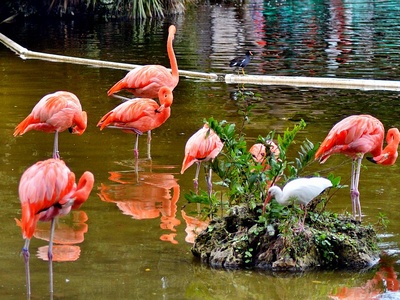
American Flamingo
The most vibrantly colored flamingo, its bright pink-orange plumage comes from carotenoid pigments in its diet of brine shrimp and algae. They are highly social, living in large colonies.
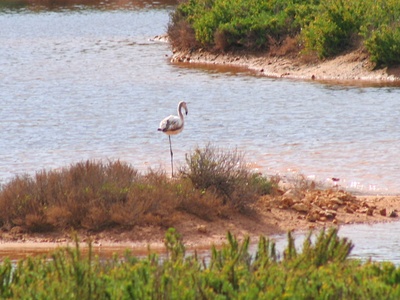
Greater Flamingo
The largest and palest flamingo species, it displays light pink plumage, gaining its color from dietary carotenoids. Its bill is distinctively pink with a contrasting black tip.
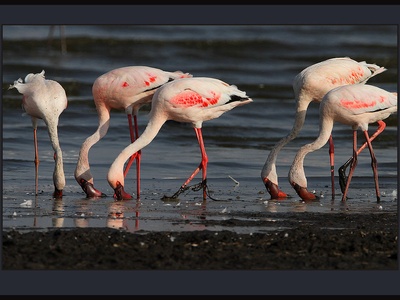
Lesser Flamingo
The smallest and most numerous flamingo, its deep pink feathers are colored by carotenoids from Spirulina algae. It has a distinctive dark red bill tipped with black.
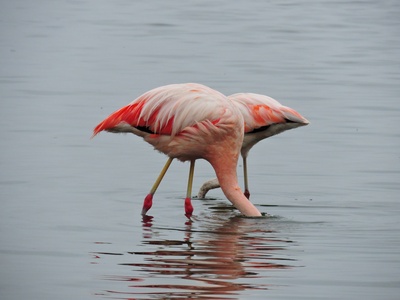
Chilean Flamingo
A large flamingo with pale pink plumage, it’s identified by its grayish legs with pink joints. Its pink color, from carotenoids, is often paler than that of the American Flamingo.
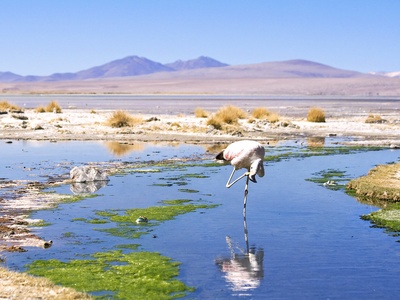
Andean Flamingo
One of the rarest flamingos, it has pale pink plumage and distinctive yellow legs. Its deep-keeled bill is specialized for feeding on tiny diatoms rich in carotenoids.
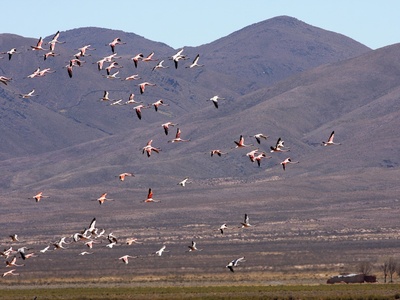
James’s Flamingo
Also known as the Puna Flamingo, this small species has pale pink plumage with bright crimson streaks on its neck. Its bright yellow bill is a key field mark.
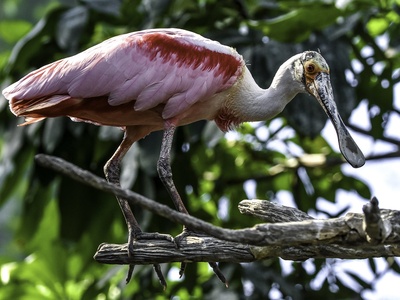
Roseate Spoonbill
Unmistakable with its spatula-shaped bill, this wader’s beautiful pink plumage is diet-derived from carotenoids in crustaceans. The color deepens with age and a richer diet.
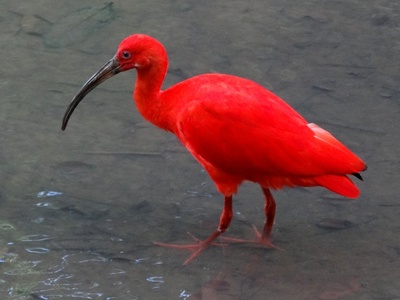
Scarlet Ibis
Famous for its brilliant coloration, which ranges from scarlet to deep pink, depending on the richness of its crustacean diet. The carotenoid pigments are deposited directly into the feathers.
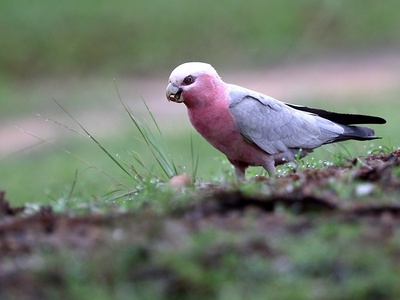
Galah
A common Australian cockatoo with a bright pink face and breast, a pale pink crest, and grey wings. Its genetically determined pink color is not diet-dependent, making it unique among many pink birds.
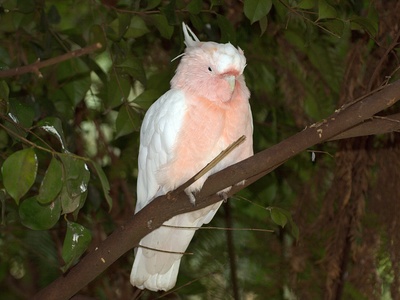
Major Mitchell’s Cockatoo
Also called the Pink Cockatoo, it has soft-textured white and salmon-pink plumage. A spectacular red-and-yellow-banded crest makes it one of Australia’s most beautiful parrots.
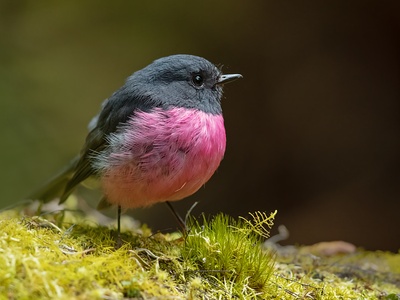
Pink Robin
The male is a striking bird with a sooty black head and back, contrasting with a vibrant, genetically-determined pink breast. It often forages for insects in dark forest undergrowth.
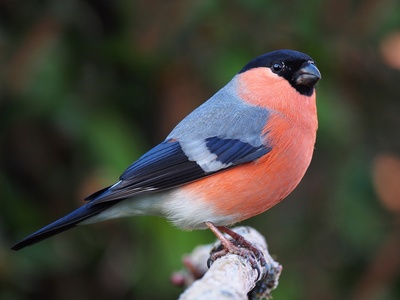
Eurasian Bullfinch
A stocky finch where the male boasts a bright rosy-pink breast and cheeks, black cap, and grey back. This distinct plumage is genetically controlled and used in courtship displays.
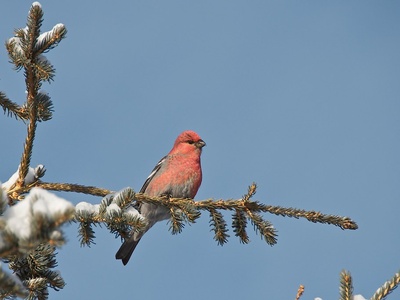
Pine Grosbeak
North America’s largest finch, the adult male is a beautiful rosy-pink all over, with gray wings. The pink coloration is influenced by carotenoids in their diet of buds and berries.
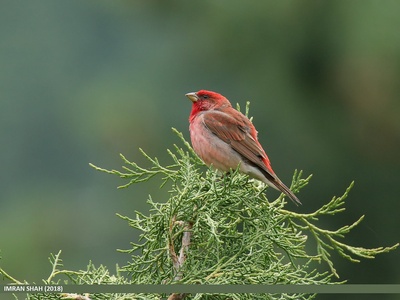
Common Rosefinch
The male has a vibrant crimson-pink head, breast, and rump, which it acquires after its second year. The color intensity is linked to carotenoid intake and signals fitness.
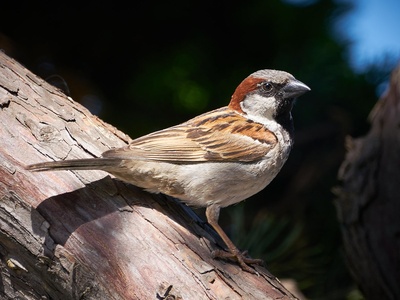
House Finch
Adult males have a rosy-red to pinkish head and breast, with color varying from pale pink to bright red based on carotenoids in their diet. Females are plain brown.
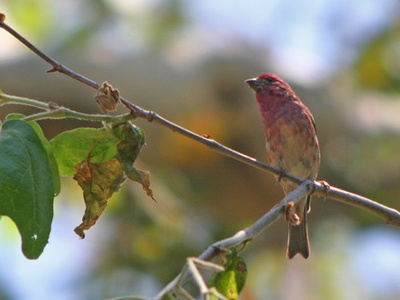
Purple Finch
Despite its name, the male is not purple but a raspberry-pink color, as if “dipped in raspberry juice.” The color comes from carotenoids and is a key mating signal.
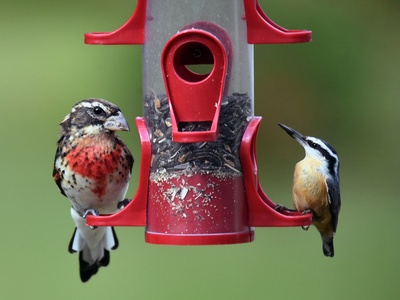
Rose-breasted Grosbeak
A chunky songbird, the male is black and white with a stunning, triangular rose-pink patch on its breast. This genetically-controlled color patch is a key feature for identification.
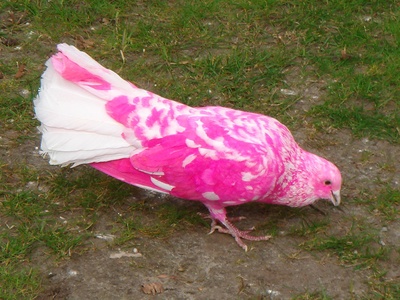
Pink Pigeon
A rare bird saved from extinction, it has pale pink plumage on its head, neck, and underparts, with brown wings. Its subtle, genetically-determined pink color is not diet-related.
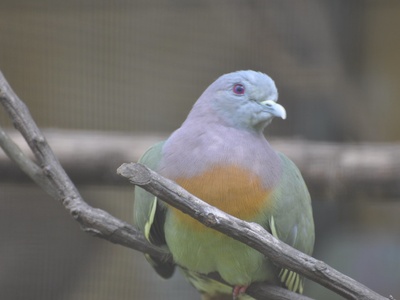
Pink-necked Green Pigeon
A colorful pigeon where the male has a distinctive pinkish neck and upper breast. This beautiful, genetically determined plumage helps it blend into forest canopies while feeding on fruit.
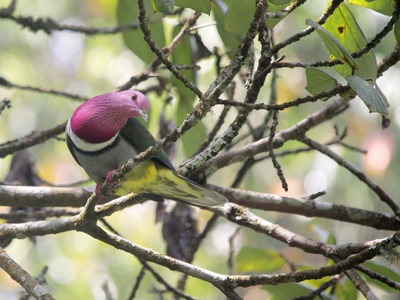
Pink-headed Fruit Dove
A visually stunning bird with a bright magenta-pink head, a white and black chest band, and a green body. This beautiful genetic coloration provides excellent camouflage in its forest home.
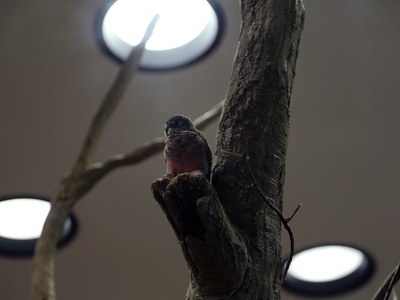
Bourke’s Parrot
A small, nomadic parrot with dusty brown plumage, a blue rump, and a distinctive rosy-pink wash over its breast and abdomen. Its subtle colors provide camouflage at dawn and dusk.
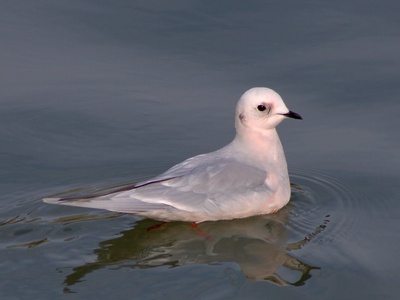
Ross’s Gull
A small, elegant gull known for the delicate pink blush on its underparts during the breeding season. This subtle coloration, possibly from a crustacean diet, makes it a prized sighting for birders.
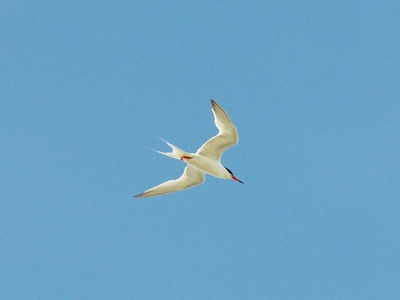
Roseate Tern
A graceful seabird named for the pale rosy-pink tint on its white underparts in breeding plumage. This subtle color is thought to come from carotenoids in its fish diet.
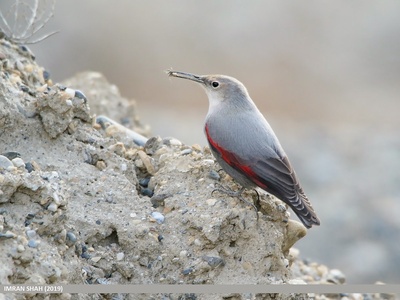
Wallcreeper
An unmistakable bird resembling a large moth in flight, it has broad wings with stunning deep pink and black patches. This genetic coloration is flashed during flight and displays.
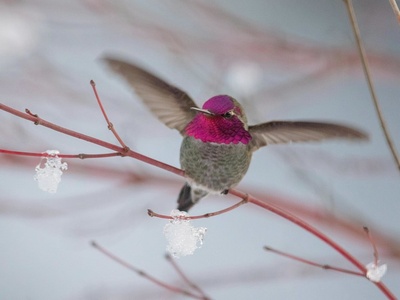
Anna’s Hummingbird
The male has an iridescent magenta-pink head and throat (gorget) that flashes in the sun. This is a structural color, created by light refracting off unique feather structures.
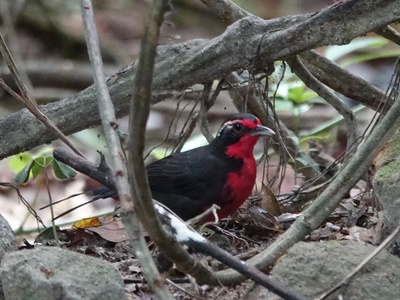
Rosy Thrush-Tanager
A skulking bird where the male has drab upperparts but a spectacular, deep rosy-pink throat, breast, and eye-stripe. This vibrant, genetically-based color is used in territorial displays.
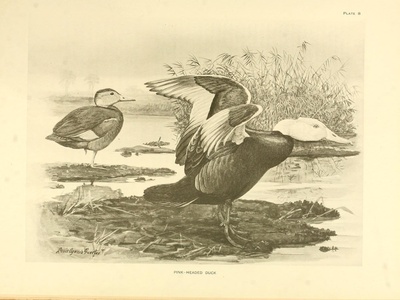
Pink-headed Duck
A unique diving duck, the male had a striking, bulbous deep-pink head and bill, contrasting with a chocolate-brown body. The species has not been reliably seen since the 1940s.
